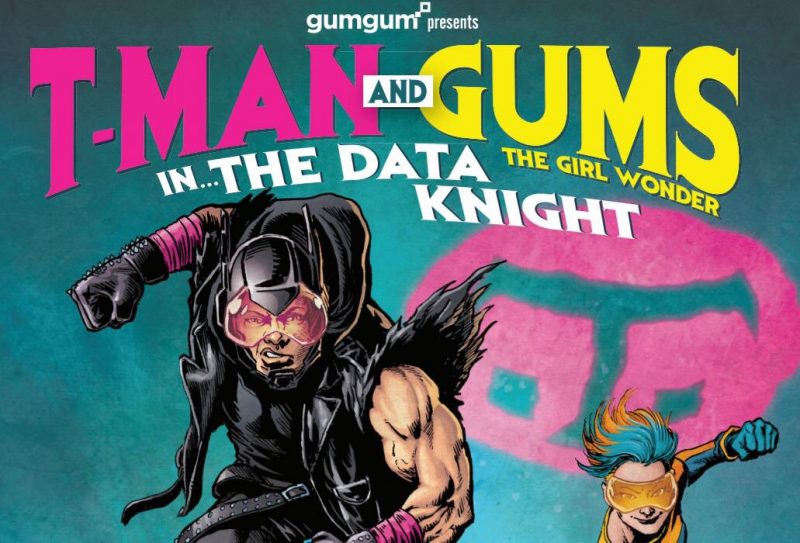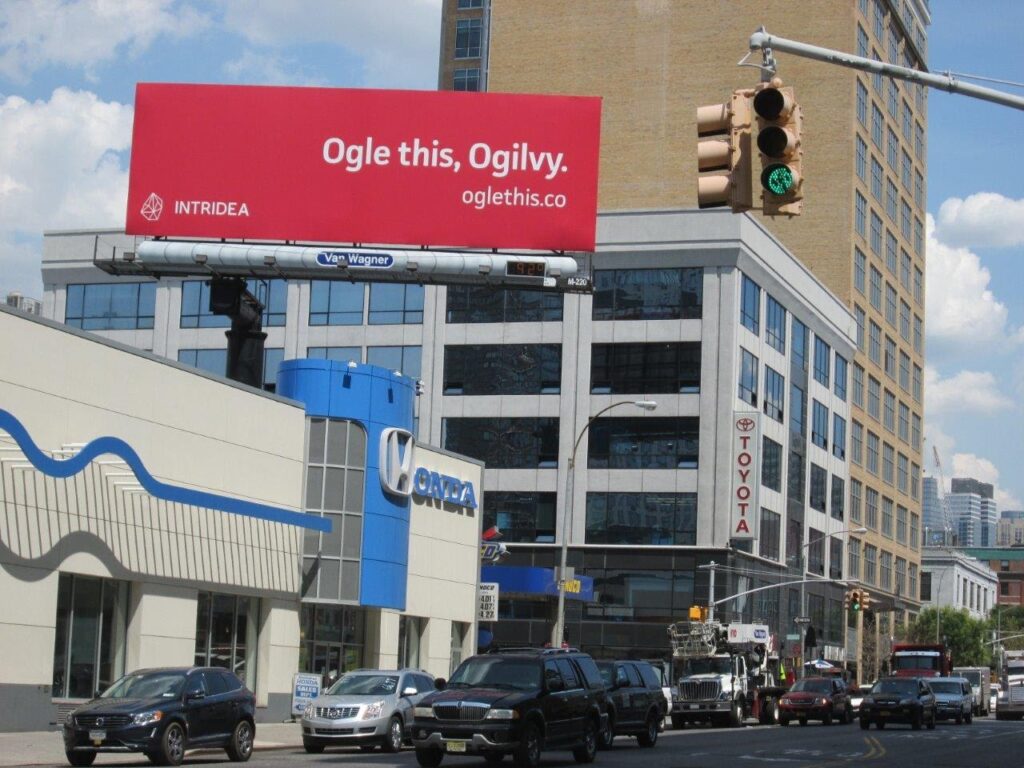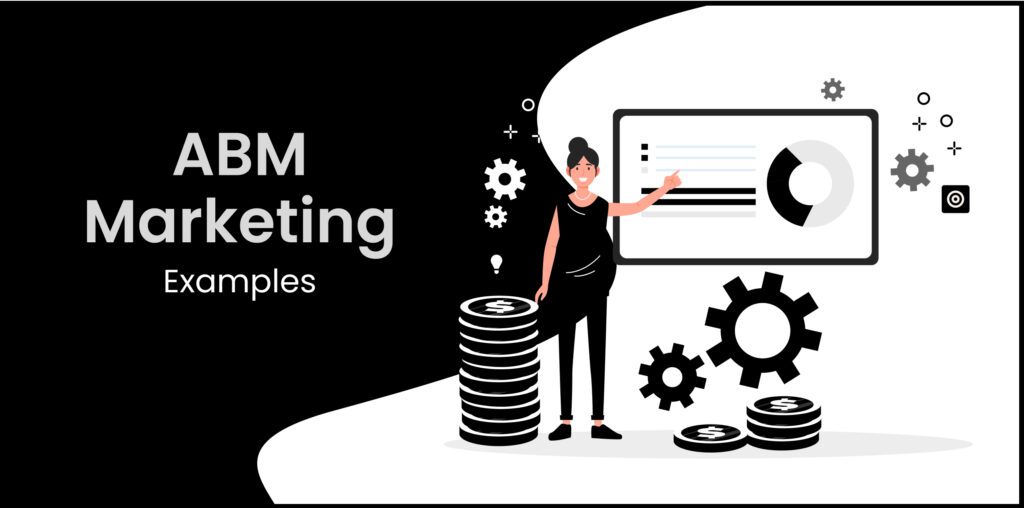Successful account-based marketing campaigns regularly remind marketers how great results are achievable. ABM is not your typical spray-and-pray, cold, outbound marketing. It requires lots of research and coordination. Right from the early stages, you’ll also need tech stacks for automation and convenience.
We have analyzed five account-based marketing examples. B2B is the common factor in all of them, yet you’ll find each is unique. We have summarized the ABM strategy of each of them. That will provide you with very specific, very actionable insights for your own campaigns.
Let’s begin!
Snowflake
As a cloud computing-based data cloud company with $2BN in sales, Snowflake targets some of the fastest-growing accounts out there. Their rapid growth (founded 2012) in just over a decade owes as much to its outstanding marketing teams as to its product range and technical excellence.
Currently they run anywhere between 500 and 1,000 full-fledged ABM campaigns, a huge number of which are 1:1. They run proven processes that use an intelligent combination of the right tech stack and synchronized teams.
On the one hand, their efforts to initiate and shape meaningful conversations with target accounts. The aim is to establish authority and credibility, rather than generate leads in a hurry. As the conversations evolve, they begin to use a combination of ad banners for events, video and text content, and more in order to attract the accounts that look like a good fit.
On the other hand, they begin identifying and understanding the influencers, decision-makers, users, and, of course, blockers. These efforts are run at multiple levels. They will seek help from co-marketers with whom they’ve joined hands. Besides, they will begin speaking to their own C-level execs to see how they can use networks to influence and pre-empt potential blockers at the target accounts.
Like in many account-based marketing examples you’ll see, Snowflake takes lots of pains in personalizing messaging, creatives,contents, and even landing-pages. As a matter of fact, Snowflakes tweaks even the CTAs, based on what stage the buyer is in their buying journey.
Finally, Snowflake continues to refine its understanding of buyers and their buying processes. How many meetings does it take, what’s the time gap between the 1st meeting and the 2nd meeting, which decision-makers get involved at what stage, and so on.
Here are the highlights of how Snowflake carries out ABM:
- They spent time identifying, scoring, and warming target accounts
- They involved sales teams that find ideal fit and best timings to serve content
- Snowflake made use of a tech stack (even in 1:1 ABM) to keep things simple and scalable
- They also created comprehensive reporting that broke down things to a granular level.
Docusign
The California-based company helps organizations carry out electronic agreements. In particular, the company facilitates electronic signature, and helps store and manage the agreements.
One of the key reasons behind DocuSign’s success with ABM strategy is their ability to target and serve personalized content. At the outset, they laid out a clear objective of their campaigns: educate audiences about the convenience and benefits of digital signatures.
Simultaneously, they wanted to learn which organizations were most likely to use and benefit from digital signatures. Using a set of clearly defined indicators, they were able to zero in on over 450 organizations that were a good fit.
DocuSign then began engaging with these target accounts through various content formats: case studies, industry-specific ads, white papers, emails, and more. Visitors to the website were asked a few questions. DocuSign used various tools to build account intelligence from these answers.
However, DocuSign noticed that the bounce rate from the website was quite high. So a new goal was added to their ABM campaigns: reduce the bounce rate. In order to achieve that, DocuSign created industry-specific landing pages which slashed the bounce rate and improved further engagement.
With a clearer understanding of their target accounts and improved engagement, DocuSign was able to improve segmentation. The results are something you don’t find often in other account-based marketing examples: B2B sales pipeline increased by 22% and engagement increased by 59%.
Here are the highlights of how DocuSign carried out ABM:
- Best-fit lead-generation was rooted in everything DocuSign did.
- They used customer testimonials to create trust and showcase use cases across different industries.
- They emphasized personalizing content for better conversion.
- Targeted, industry-specific CTAs dramatically increased their CTR.
GumGum
GumGum provides contextual intelligence to its client organizations. Its dynamic ad-solutions help clients make informed decisions and get ready for a future where user privacy is paramount.
In the list of ABM examples, GumGum enjoys a unique popularity. Among its ABM successes, the way GumGum won the T-mobile account and wooed McDonald’s perhaps stand out more than others. That was because of the kind of detailing they went into. What GumGum did was certainly brave, but that was absolutely backed by deep customer intel.
After spending some time researching the key decision-makers at T-mobile GumGum learned that John Legere, CEO T-mobile, was a Batman fan. What followed was famous, so we’ll keep it short here.
GumGum commissioned a comic book where they created a fantasy super-hero T-man who works with a sidekick named – you guessed it – Gums. Together they do what superheroes do: save the city/country/world from some disaster. In this case, the disaster was poor cellphone reception, something that T-mobile had a solution to. And these comic books were distributed to the various stakeholders at T-mobile.
With McDonald’s, they orchestrated personalization around the ingredients of BigMac. GumGum associated each ingredient with a unique feature of their technology and how it made GumGum the ideal company to partner with for McDonald’s.
Needless to add, both these exercises were hugely successful.

Here are the highlights of how GumGum carried out its ABM campaign:
- GumGum first dug deeper to learn more about the key people and the core products of the target account. After that, they took some bold steps that would be difficult to copy.
- The confidence with which they approached the target account was special. But that came from deep research and wasn’t a fluke.
- It’s one of the most creative account-based marketing examples. B2B doesn’t have to be a boring sales pitch, see?
- Designing personalized content was very risky, but it became hugely successful because it was backed by research.
Intridea
How do you advertise your services to a company that is itself a leader in the advertising and promotional space? That was precisely the challenge for Intridea (now part of Mobomo), a company that is into web design services and products.
Intridea had zeroed in on Ogilvy, the global giant in advertising and PR, as one of their target accounts. They also had carried out research to begin engaging meaningfully. But was there a better way to impress the account that itself was impressing consumers with brilliant creativity?
So Intridea decided to take the less obvious approach. They decided the best way to persuade Ogilvy was to make things simple to the point of being unavoidable and unmissable. Simply put, they would place a billboard right outside the target account’s office.
And they kept the design and copy very brief. So the billboard just said, “Ogle this,Ogilvy.” And there’s a link below that. The link led to a page with a very brief but extremely personalized copy that showed what Intridea could deliver (AKA why they were a great fit for Ogilvy). And there were a few funny GIFs too.
It was followed by a link to fix a meeting with the Intridea top brass (Today, the link redirects you to the LinkedIn profile of Yoshi Maisami, the founder of Intridea).
Was the approach successful? Well, at least two business leaders from Ogilvy (Ogilvy New York CEO and the OgilvyOne MD) got in touch with Intridea to book meetings. So obviously the strategy paid off well.

Here are the highlights of Intridea’s ABM strategy:
- By placing a billboard right across the offices of the target account, Intridea avoided beating around the bush. They got the maximum visibility.
- Intridea had put a great deal of hard work into learning about Ogilvy. Merely copying their idea of using a billboard won’t deliver the same success if you don’t put in the hard work to match.
- The funny GIFs on the landing page provided the personal human touch to a copy that would have otherwise come across as a little too business-like.
- This is one of those account-based marketing examples that stress how keeping things simple can still be magical. In the age of high-tech communication devices and mediums, Intridea leveraged the good old billboard.
Salsify
Let’s say you target to land 60 registrants. You begin with researching a group of target accounts. Then you send them customized messages. What next?
Not surprisingly, that’s one of the ABM challenges marketers face, and Salsify was no different. Even though it was the industry’s only fully unified PXM (Product Experience Management) platform, Salsify knew they’d need more to convert big-ticket accounts.
However, Salsify wasn’t underprepared. They had figured out what chain of events should be orchestrated (and when) in order to garner the maximum impact.
Their roadshow was going to be huge. They had big names – Google and Johnson & Johnson – speaking there. Without a clear and detailed ABM strategy, even these big names wouldn’t attract much of registrants.
Which is why Salsify began sending out personalized messages simultaneously. Release of targeted ads were scheduled to coincide with these messages. Qualified leads were further taken further down the funnel, with customized emails triggered at every stage of the entire journey.
The multi-channel approach made sure the campaigns created a comprehensive impact. Within a matter of hours, Salsify could ring in 82 registrants (their original target was 60).
Here are the highlights of Salify’s ABM campaign:
- They went all-out with their efforts, instead of merely relying on big names like Google to do the magic. That’s proactive ABM at its best.
- Because they had a relatively small window within which to woo registrants, they carefully planned and executed the multi-channel approach. It is considered one of the classic examples of ABM where the marketers prepared for a long time for a campaign that lasted for a much shorter duration.
- The target of reaching the registrant goal was achieved largely because the marketing and sales teams were fully synchronized. This synchronization was crucial because there would be little time for repairs if the numbers didn’t show up as expected.
- Salsify’s approach to ABM is considered unusual because it was used for an event rather than to sell big ticket products or services to enterprises. This underlines how versatile ABM can be in the hands of seasoned experts.
Over to you
The ABM examples above have surely shown you how potent ABM is as a marketing strategy. Adequate research, correct target account identification and scoring, and personalized communications form the core foundation on which to build your entire campaign.
You’ll also have noticed in the above examples that no two successful examples are identical in how they’ve leveraged ABM. That’s because all major campaigns are unique and you need to be creative to find what unique element will slay it for you.
Interested in learning more? We can help you navigate – let’s talk!



